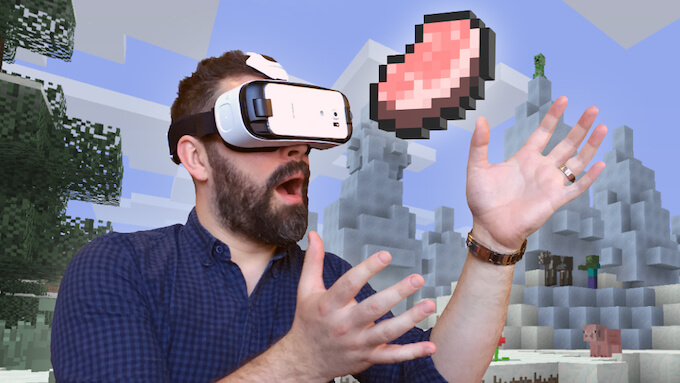Virtual Reality and Augmented Reality have been talked about a lot in these two years and more talking is going to happen in the days forward. Although these two technologies are parallel, nevertheless they are not the same. In this article we explain you the differences between virtual reality and augmented reality, because from we found on many blogs and forums there is a lot of confusion going on in the use of these two technologies.
What is Virtual Reality?
Virtual Reality (VR) is a computer-generated projection of a world encompassing the user. Based on the degree of immersion, the user may interact with objects in this simulated world or just be a spectator and experience sight and sounds as if it were real.
What is VR: History and Types of Virtual Reality [Latest Tech]
Virtual reality – These are two words that are on everyone’s lips for months. But, do you know what it is? In this article we explain what the VR is and how
There is a lot of debate in various forums and questions like ‘do we really need a technology to escape reality?’ Questions like these keep floating up somewhere or the other on the Internet. However experts and people already working in this niche know that the actual thing is no ‘getting away’ but ‘giving’.
VR gives us experiences we could never afford or difficult have in real life. This previous article dedication to some of the incredible applications of this technology showcase how VR is not just a passing by tech buzzword but is here to change the way we live.
To experience VR you need a dedicated VR Headset like the PlayStation VR or Oculus Rift (for complete immersion) or a Google Cardboard (for viewing 360 degrees photos and videos).
VRML (Virtual Reality Modeling Language) is the coding language that makes VR possible. It is used to describe 3-D image sequences and how users can interact with them.
What is Augmented Reality?
Augmented Reality (AR), earlier known as Mixed Reality (MR) is the technology that adds digital objects into the real world in a way that you stand at the junction of the virtual and real world. If properly constructed this mixed world appears to be far more real, now that interactions with these digital objects can be made to mimic real objects.
AR technology may seem little hard to imagine, but to put it in short, it is an interactive environment where reality and fiction walk together. This digital information (of virtual object) is received on a screen that focuses on real environment and through the virtue of concepts like image recognition and localization you can interact with them.
AR technology is quickly making its way to the market with aggressive product developments from Google (Google Glass) and Microsoft (HoloLens). Pokemon Go is a classical example of how augmented reality can sweep us off our feet. This technology opens doors to the future and brings to the hands of the consumers, technologies we have been dreaming of for ages.
Similarities Between Virtual Reality and Augmented Reality
In terms of technology, Augmented and virtual realities are almost the same. Both aim to serve the user with a truly enriched and enhanced experience that is completely immersive.
Both these technologies are currently in their growth stages and already enabling experiences sought after in the entertainment industry. New artificial worlds are coming to life with many games extending their support and implementing VR and AR technologies.
Though currently the concentration is on entertainment and social networking (with apps like vTime), there are also groups across the world working to adopt both these technologies into the medical field.
It is already identified that these technologies can be used to decrease the pain experienced by a patient and to heal psychological conditions such as Post Traumatic Stress Disorder (PTSD).
Differences Between Augmented Reality and Virtual Reality
Like already mentioned, augmented reality is about the addition of virtual components as new layers of interaction in the real world.
Contrastingly, virtual reality creates its own environment that is completely computer generated and doesn’t necessarily has to be close to reality until the user really enjoys it. You flying across the Pacific like a bird, for example.
The other significant difference is in the way this technology is delivered to the end user. VR can be experience using head-mounted and hand-held controllers. Many other accessories connect people to the virtual reality allowing them to precisely control and navigate their actions.
Augmented reality currently being used in mobile devices such as laptops, smart phones, and tablets. However, there may also be many other head-mounted controllers like the Google Glass and Hololens being developed by tech companies.
However, these technologies can’t be considered as being converse to each other. They can be merged together to obtain a more immersive experience. The best example to this as we have read about, is the use of haptic feedback (i.e. the vibration) added on interaction is an integral part of the AR. However, it is used in VR to create more life like immersing.
Virtual Reality and Augmented Reality are wonderful technologies that bring a whole new dimension of interactions with the digital worlds. Both these technologies are bringing a new set of opportunities into various industries and making our lives a lot easier.
Image Credits: Mojang, ExtremeTech
